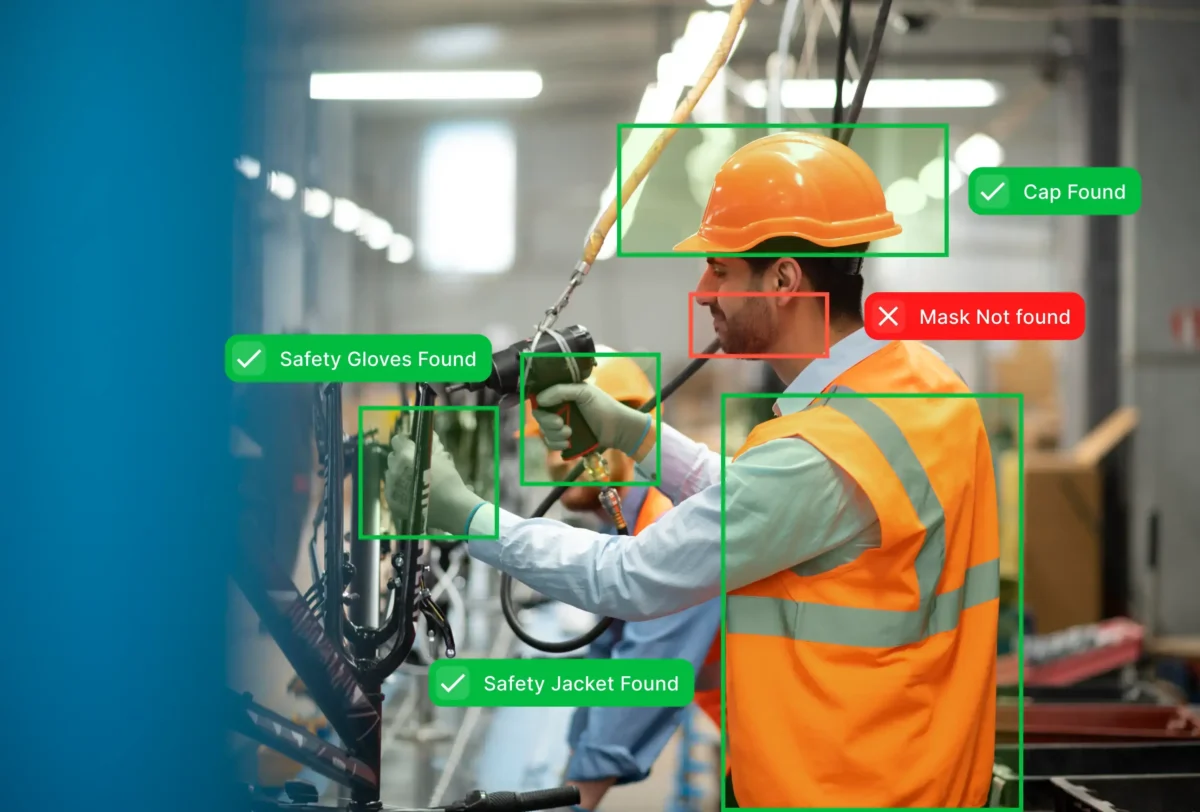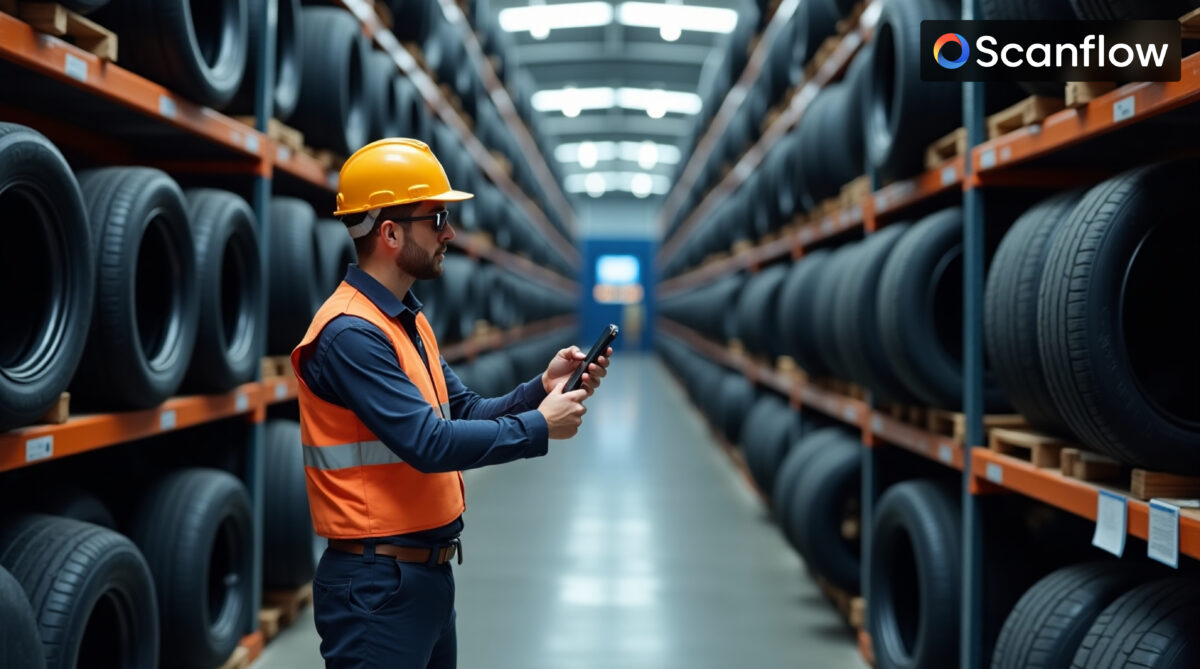How scanflow helped automate tire handling, improve visibility, and reduce operational cost
When a global e-commerce supply chain team sought to improve the way they track and manage tire inve...
2 Mins read
Posted on Apr 22, 2025
May 15, 2024
3 Mins read

The Importance of Safety in the Cement Industry
The cement industry is a vital sector, providing the essential building blocks for infrastructure and construction projects around the world. However, this industry also presents inherent safety challenges. Workers face risks from exposure to dust, hazardous materials, and working at heights. Ensuring worker safety is paramount, not just for the well-being of employees but also for operational efficiency and regulatory compliance.
The Challenge: A Legacy Approach to Safety
Previously, the leading cement manufacturer relied on manual methods to monitor worker safety. Safety personnel conducted routine patrols, manually checking for PPE compliance and adherence to safe work practices. This approach had limitations:
These limitations created a constant concern for worker safety and the potential for costly accidents. The company leadership recognized the need for a more robust and proactive safety solution.
The Solution: Implementing an AI-Powered Safety Net
The company partnered with us to implement a cutting-edge Safety Violation Detection System. This system leverages artificial intelligence (AI) and computer vision technology to achieve real-time, comprehensive safety monitoring. Here’s a deeper dive into the system’s functionalities:
Scanflow’s Customizable suite of solution
We built Scanflow keeping in mind the diverse needs of various industries. The system can be customized to address specific safety concerns within the plant. In this case, the solution focused on three critical use cases:
The Result: Measurable Improvements and a Culture of Safety
The implementation of the AI-powered Safety Violation Detection System has yielded significant positive outcomes:
Looking Ahead: A Model for the Industry
The success story of this leading cement manufacturer serves as a compelling example for the entire industry. By embracing AI-powered safety solutions, companies can create safer work environments, reduce operational costs, and gain valuable insights for continuous improvement. As technology continues to evolve, AI-powered systems will play an increasingly important role in safeguarding workers and ensuring a more secure future for the cement industry.
How scanflow helped automate tire handling, improve visibility, and reduce operational cost
2 Mins read
Posted on Apr 22, 2025
Automated Invoice Scanning & Processing: How Scanflow Helped a Leading Enterprise Reduce Errors and Improve Efficiency in invoice scanning
3 Mins read
Posted on Mar 26, 2025

This privacy policy sets out how Scanflow uses and protects any information that you give Scanflow when you use this website. Scanflow is committed to ensuring that your privacy is protected. We shall ask you to provide certain information by which you can be identified when using this website, then you can be assured that it will only be used in accordance with this privacy statement.
Scanflow may change this policy from time to time by updating this page. You should check this page from time to time to ensure that you are happy with any changes.
What We Collect
We may collect the following information:
Name and job title
Contact information including email address
Demographic information such as postcode, preferences and interests
Other information relevant to customer surveys and/or offers
What we do with the information we gather
We require this information to understand your needs and provide you with a better service, and in particular for the following reasons:
Internal record keeping.
We may use the information to improve our products and services.
We may periodically send promotional emails about new products, special offers or other information which we think you may find interesting using the email address which you have provided.
From time to time, we may also use your information to contact you for market research purposes. We may contact you by email, phone, fax or mail.
We may use the information to customize the website according to your interests.
Security
We are committed to ensuring that your information is secure. In order to prevent unauthorized access or disclosure, we have put in place suitable physical, electronic and managerial procedures to safeguard and secure the information we collect online.
How we use cookies
A cookie is a small file which asks permission to be placed on your computer’s hard drive. Once you agree, the file is added and the cookie helps analyze web traffic or lets you know when you visit a particular site. Cookies allow web applications to respond to you as an individual. The web application can tailor its operations to your needs, likes and dislikes by gathering and remembering information about your preferences.
We use traffic log cookies to identify which pages are being used. This helps us analyze data about webpage traffic and improve our website in order to tailor it to customer needs. We only use this information for statistical analysis purposes and then the data is removed from the system.
Overall, cookies help us provide you with a better website, by enabling us to monitor which pages you find useful and which you do not. A cookie in no way gives us access to your computer or any information about you, other than the data you choose to share with us.
You can choose to accept or decline cookies. Most web browsers automatically accept cookies, but you can usually modify your browser setting to decline cookies if you prefer. This may prevent you from taking full advantage of the website.
Links to other websites
Our website may contain links to other websites of interest. However, once you have used these links to leave our site, you should note that we do not have any control over that other website. Therefore, we cannot be responsible for the protection and privacy of any information which you provide whilst visiting such sites and such sites are not governed by this privacy statement. You should exercise caution and look at the privacy statement applicable to the website in question.
Controlling your personal information
You may choose to restrict the collection or use of your personal information in the following ways:
Whenever you are asked to fill in a form on the website, look for the box that you can click to indicate that you do not want the information to be used by anybody for direct marketing purposes
If you have previously agreed to us using your personal information for direct marketing purposes, you may change your mind at any time by writing to or emailing us at info@scanflow.ai We will not sell, distribute or lease your personal information to third parties unless we have your permission or are required by law to do so. We may use your personal information to send you promotional information about third parties which we think you may find interesting if you tell us that you wish this to happen. If you believe that any information, we are holding out from you is incorrect or incomplete, please write to or email us as soon as possible at the above address. We will promptly correct any information found to be incorrect.

